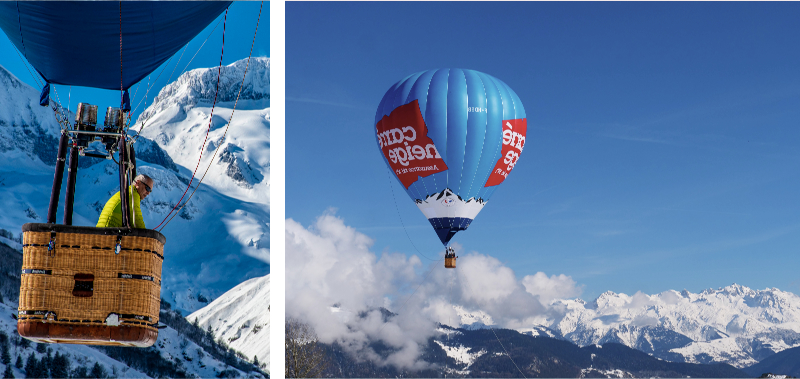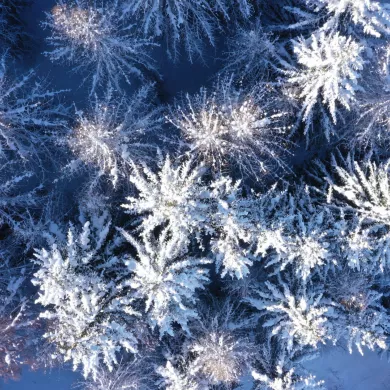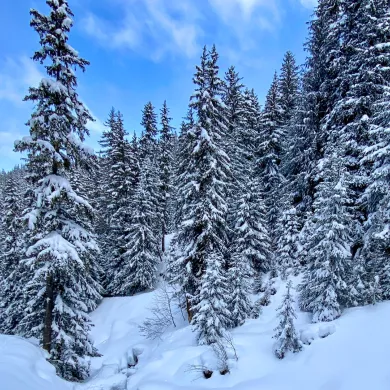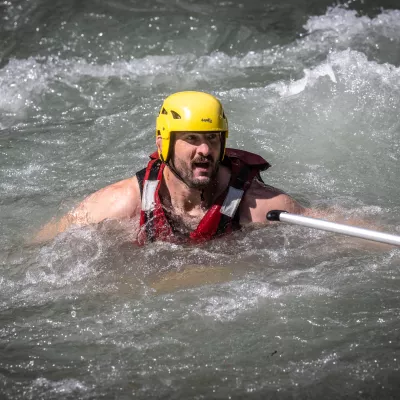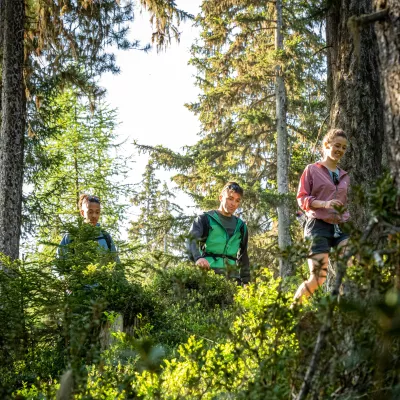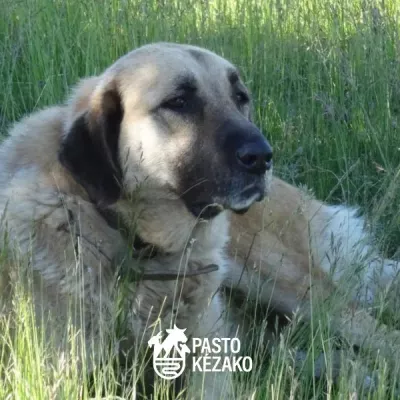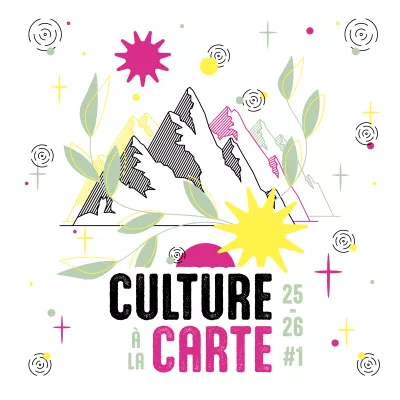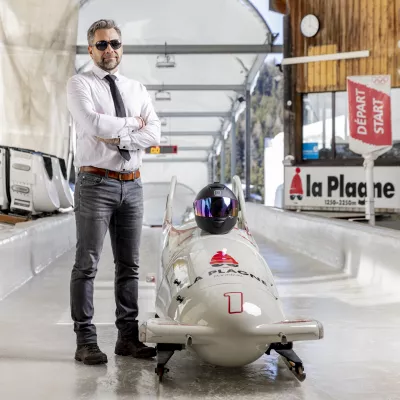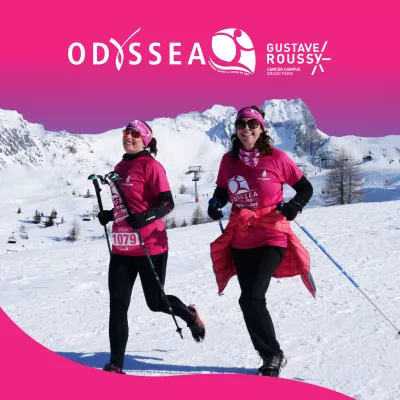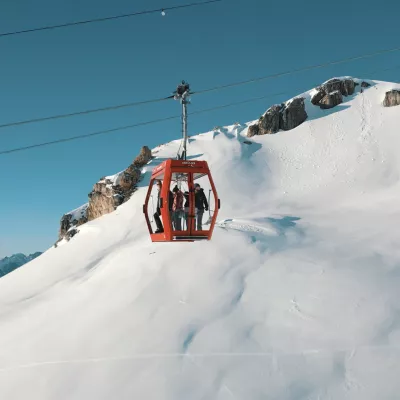La Plagne’s forest is a “green lung” (or white in the winter!) with an extraordinary richness of essences and flora, as well as the fauna which populates it from the subsoil to the canopy. A real treasure that is worth discovering on skis as well as during other revitalizing activities. Approximately 22% of La Plagne's slopes are in forest, a fabulous asset for one of the most beautiful high altitude ski areas.
The guardians of the forest: who are they?
1. Watching & acting: The ONF
Nearly 25% of La Plagne consists of communal forest land (3500 hectares, the equivalent of the Bois de Vincennes and the woods at Disneyland Paris combined!), to which we can add the many privately-owned forests that are harder to estimate in size but which double this surface. In other words, a total of 7000 ha, the equivalent of approximately 7 000 football fields!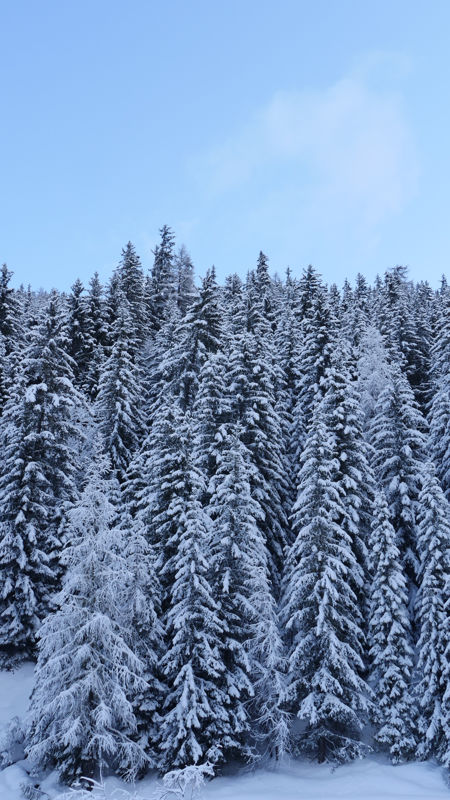
For several years now, in addition to its traditional missions, the ONF (National Forestry Commission) has been carrying out a vigilant health watch because of global warming. The Tarentaise forests -including the ones in La Plagne – are doing well, which is fortunate because this is far from being the case of all of France’s forests. To observe the signs of this good health in La Plagne, you must go into the forest and look down at the ground.
Far from being as ordinary as it can seem, the ground is actually one of the best indicators of the state of the forest. Thanks to areas that are hard to get to, the preserved undergrowth is full of life: a permanent virtuous and regenerative cycle between the earth and a whole “Microcosmos"-style universe that flourishes in the humus. In order to prevent the dramatic events that are observed elsewhere in France, like the disappearance of certain species, the ONF is part of a coherent and preventive proactive movement: forest maintenance, checking and managing the cohabitation between the different users (tourism, farming, etc.), diversification of tree species, numerous new plants and an ongoing collaboration with the Environmental Observatory.
The winter season does not put a stop to the ONF’s activity, far from it. The rangers concentrate on surveillance and monitoring of the forest, including a survey of avalanches. Work is also carried out on implementing future projects.
Véronique de Righi, ONF regional manager for the Moutiers Territorial Unit.
"We are there to ensure that new projects In La Plagne do not encroach on the forest. We work with the SAP, which has a policy of reforestation and reducing the number of pylons (253 pylons removed since 2006)."
* Société d'Aménagement de La Plagne – the ski lift company

2. Moving species for better protection: the Environmental Observatory
Both discreet and scientifically rigorous, the actions of the Environmental Observatory created in 2014 by the SAP are concretely implemented in the field. Amongst other things, these include moving species ahead of development projects.
This is the case, for example, of the Solitaire butterfly and its host plant, the marsh cranberry. Specialist ecologists come to the site before the work commences to check for the presence of butterflies in the form of eggs or caterpillars. If they find them, they are moved to a favourable location away from the worksite. Once this has been done, the host plants (where the butterflies lay their eggs and develop) can also be moved away from the worksite. The aim of the operation is to preserve an equivalent "habitable" surface for that species of butterfly so as not to endanger the fragile insect’s survival.
Secret forest: remarkable habitats to discover with a guide
La Plagne has several protected areas, some of which can be discovered during a hike with a guide. The guides play a fundamental role in ensuring good cohabitation between hikers and the forest and guaranteeing good practices.
Three examples of remarkable habitats:
- Mont-Saint-Jacques where the timid black grouse lives year round. In winter, this pretty gamebird, also called a ‘blackgame’, builds… an igloo! However, if it is disturbed by skiers, the bird leaves its winter home and does not survive. The black grouse is not a protected species, but it is an "umbrella" species that other species depend on directly to survive. An ecosystem with a fragile balance that absolutely must be preserved.
- Wetlands, nearly invisible if you are not attentive, can be found almost everywhere in La Plagne, in or close to the ski area: these are sensitive natural environments that undergo regular ecological diagnoses. Around 120 hectares can be found in La Plagne, including Carella plateau, next to the chairlift, or the Lac Noir peat bog in the Montchavin-Les Coches sector.
- Another example of a remarkable habitat is the stone pine grove on gypsum, where the stone pines only continue to grow because of the absent-mindedness of the speckled nutcracker which forgets where it has hidden its seeds. A natural treasure in the heart of the ski area, 2000 m above sea level, which can be visited on snowshoes.
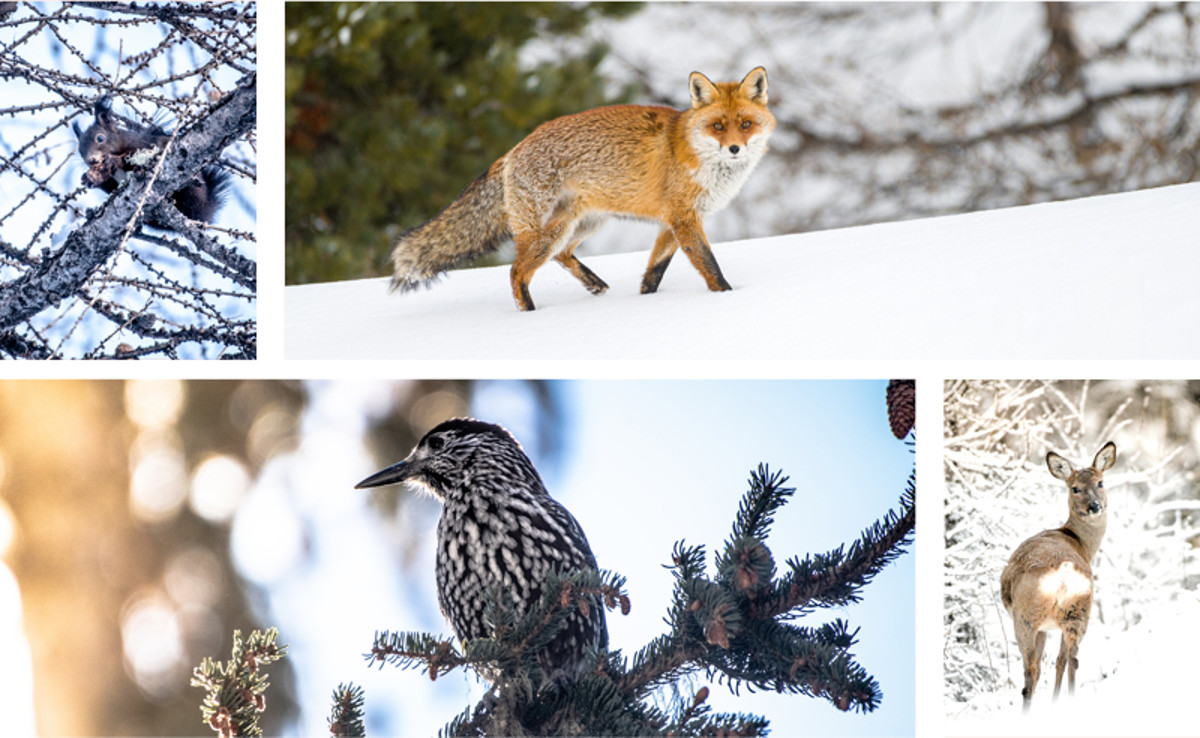
Did you know?
Protected species:
- Lady’s Slipper flower
- ibex
- Bechstein’s bat
- most of the avifauna (i.e. the birds), from chickadees to birds of prey
Unprotected species:
- Edelweiss
- Marmots
- Black grouse
- Bovids, including chamois
- Wild boar
What activities can you try in the forest?
| Zen: Ski-sophrology
In Japan, people have been “tree hugging" for around 40 years and it is proven that this connection with the trees is beneficial for the mind and body.
Karine, a sophrologist and ski instructor with Evolution 2, combines both activities and proposes individual sessions of 1½ hrs in the heart of the forest in Montchavin-Les Coches
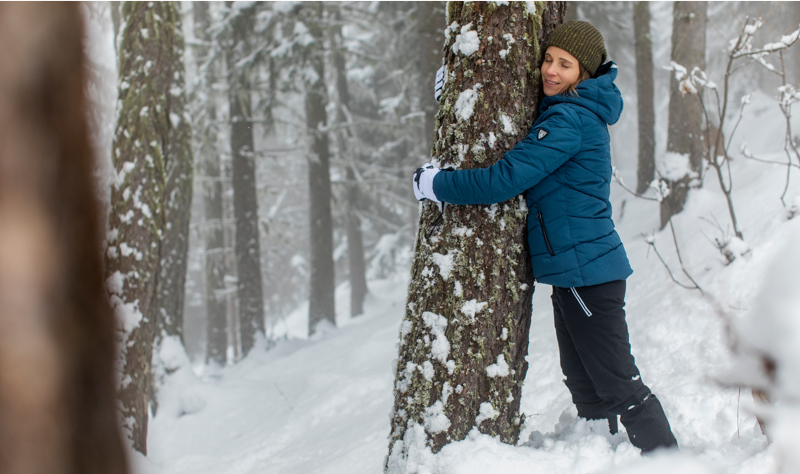
| Immersive: snowshoe walks
Here are two of our favourite snowshoe walks:
- The stone pine grove on gypsum: above Plagne Villages. Its situation in the middle of the ski runs requires full attention to guarantee its sustainability and the harmony of the ecosystem. The area is ZNIEFF listed (Natural Area of special Ecological, Faunistic or Floristic Interest) but this does not mean it is an impenetrable sanctuary.
A snowshoe hike is really the only way to discover all its secrets. Going with a guide prevents erosion of the site and noise that can endanger the survival of its inhabitants (foxes, squirrels, ermines, mountain hare and black grouse). The guides can reveal the secrets of the animal tracks in the snow
- Bois des Fornettes trail: in the Montalbert sector, a trail to discover on snowshoes, away from the ski runs. An easy walk climbing 350 m through the forest.
There are also many other snowshoe routes to discover in La Plagne.
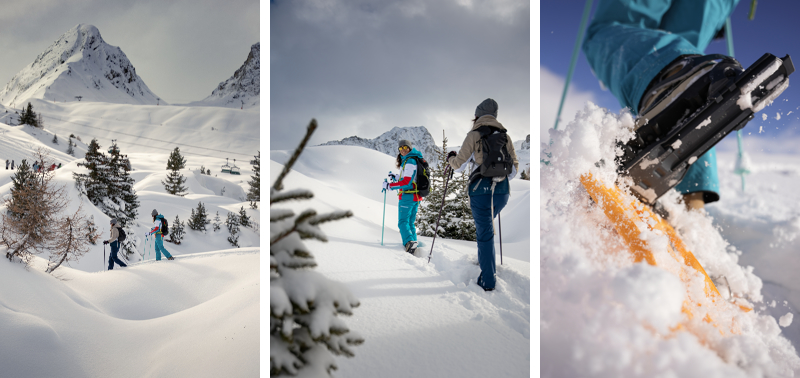
| Virtuous and thrilling: Moonbikes
Midway between a snow-scooter and a skidoo in terms of thrills, this green machine is 100% electric and silent. When the lifts close, the ski area becomes an endless playground for environmentally-friendly excursions. Compact and three times lighter than a skidoo, a Moonbike is extremely easy to drive and simple in design (an accelerator and a brake). Driving one offers new sensations as you accelerate, carve and cross the slope in secured areas. Supervised activity, minimum age 18.
Assembled in France, Moonbikes have a track at the back and a ski at the front for steering. Maximum speed: 42 km/hr, 1½ hrs autonomy.
With Elpro: ride towards the Col de Forcle, with views of Mont-Blanc and the Vanoise glaciers after a 15 minute initiation session on a closed circuit to learn how to handle them. This is also a great activity for eco-responsible seminars. For several years now, positive transition has been one of Elpro’s main concerns and its remaining thermal activities (skidoos and quad bikes) should come to an end in the next two years. Supervised ride lasting 30 minutes.
With Oxygène: 12 Moonbikes for guided rides, leaving from Plagne Centre and Belle Plagne. 1hr ride.
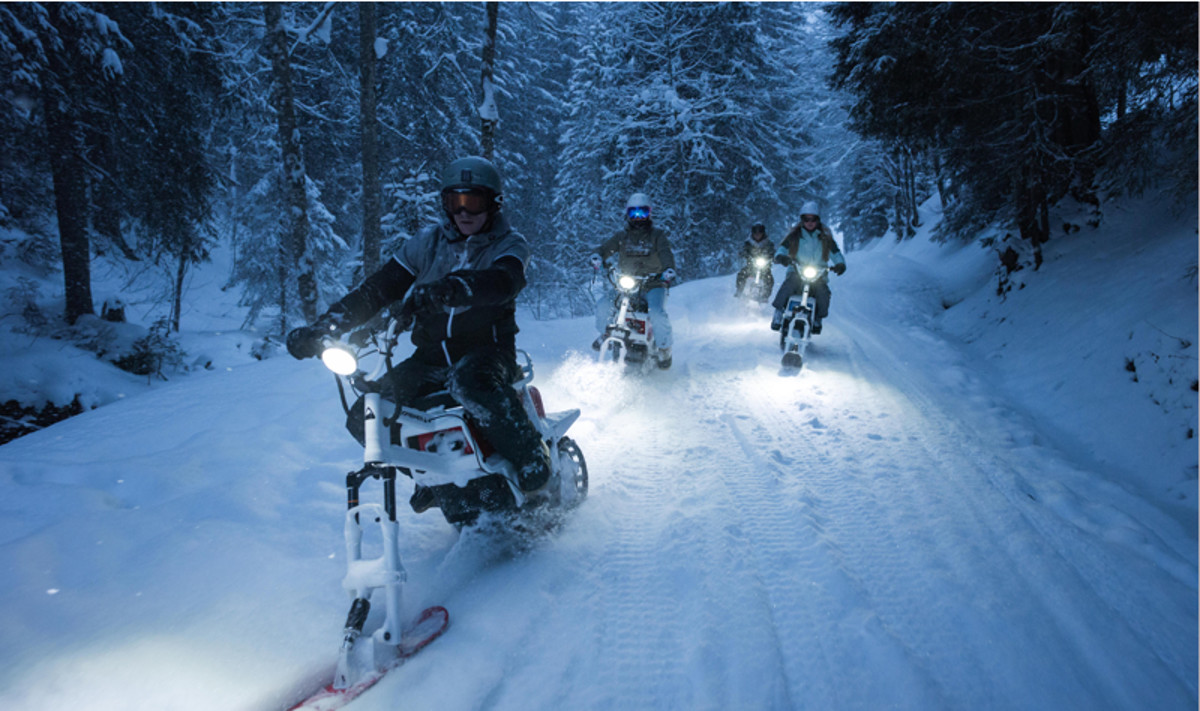
| Eskimo time: Igloo building
Guillaume, your guide, acts as team leader and puts his expertise into building a life-size igloo!
A great team building exercise out on the mountain, where each person is an essential link in building the structure. A dynamic and fun activity, building the igloo takes half a day. Minimum group size 6 people, from the same group or not, on request.
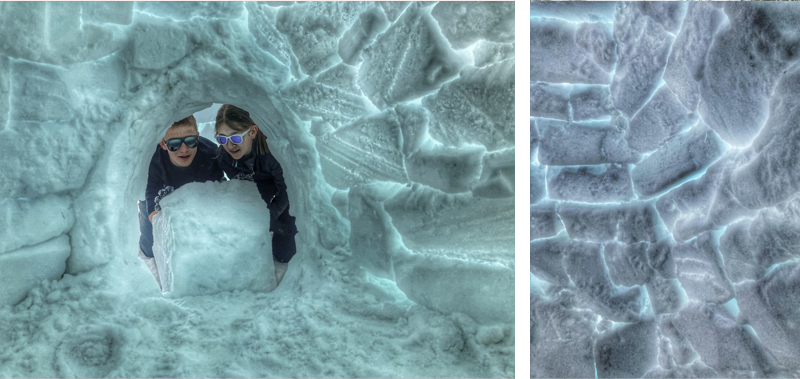
| Intoxicating: a tethered balloon ride
Alone in the basket, enjoy a magical flight under the hot air balloon with views of the majestic mountain massifs.
In Champagny-le-Haut, the tethered balloon flies over the glacial valley, a preserved plateau with forests and unspoiled areas that resemble the Canadian Far North. Thursday afternoons, 2 – 4pm.
New in Montalbert, a hot air balloon on the Plateau du Gentil. The tethered flight overlooks the Tarentaise valley with breathtaking views of the Beaufortain and Mont Blanc. Wednesday mornings, 9 – 11am.
